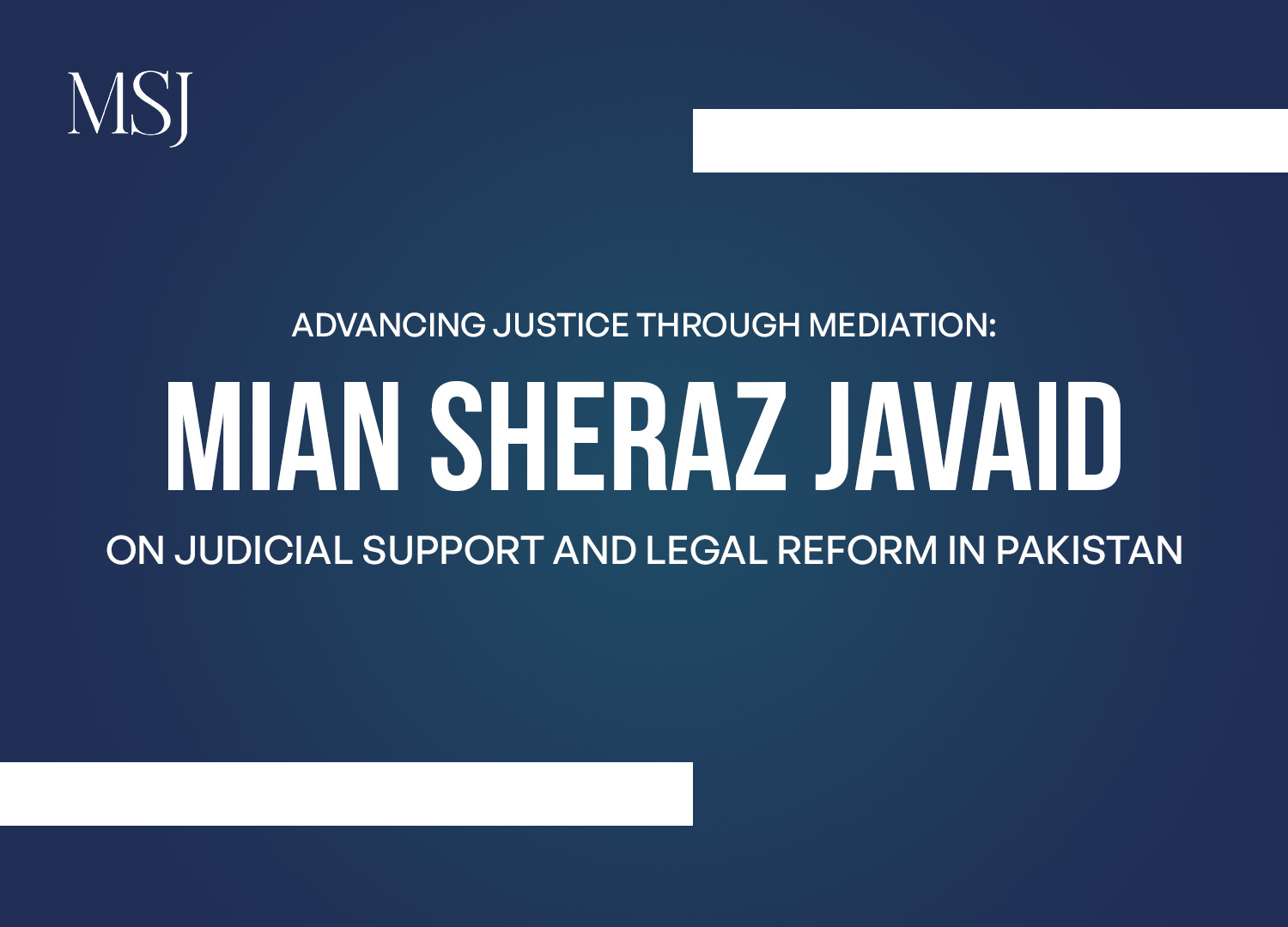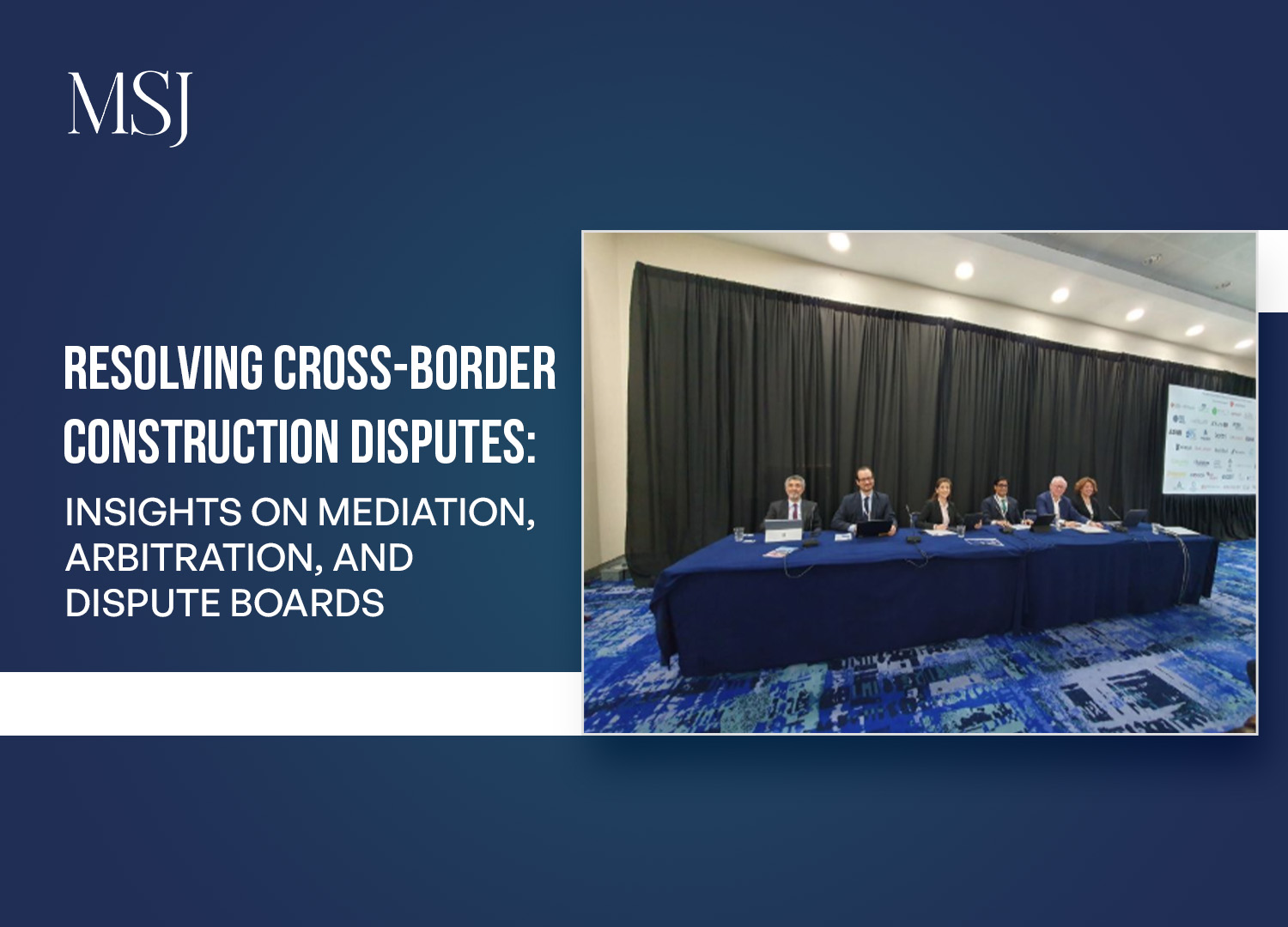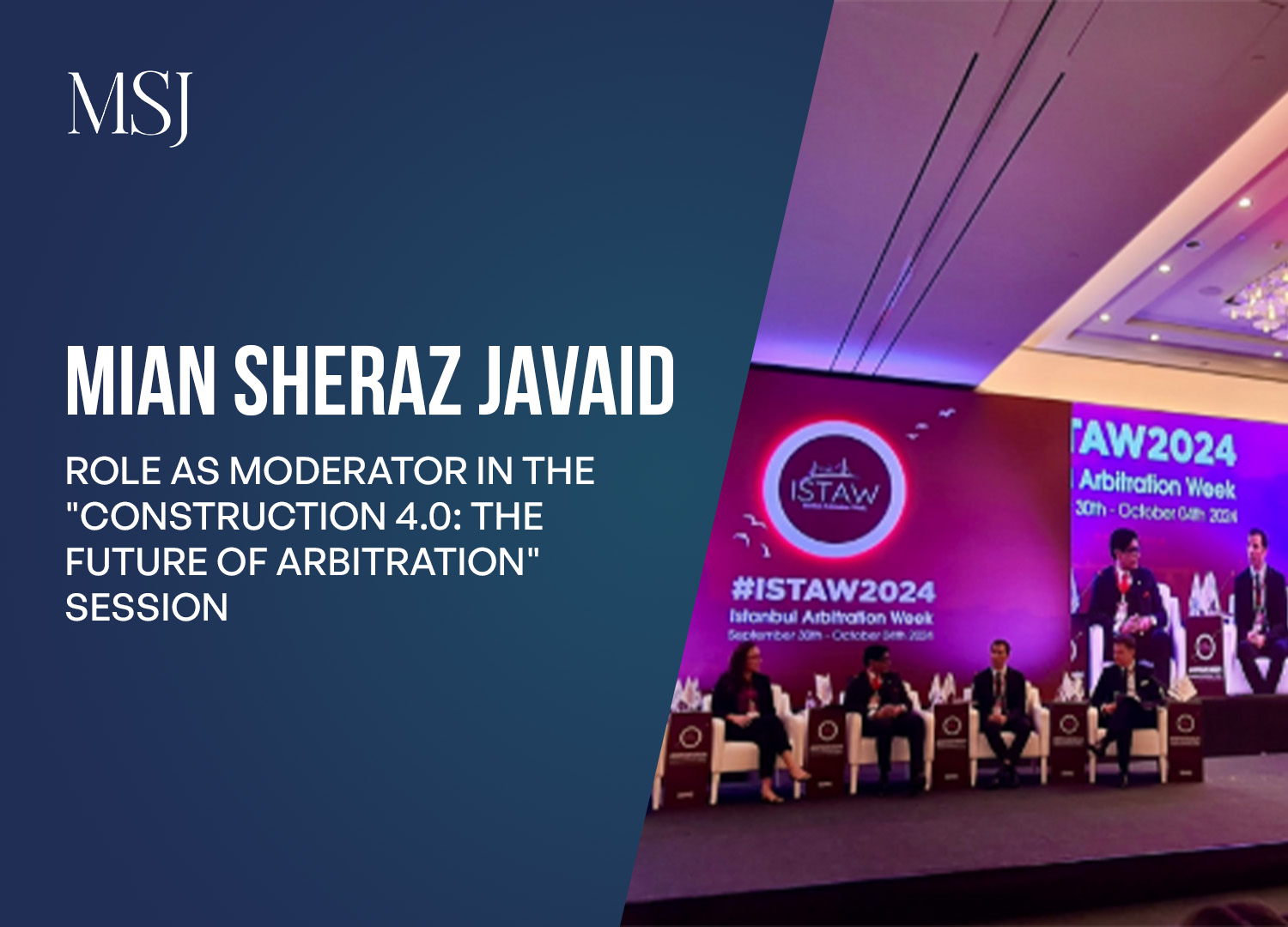Managing Construction Disputes in China: ADR Approaches and Strategic Insights
Sheraz commenced his presentation by stating how the year 2023 is going to be very significant for the construction industry in China, since the sector has rebounded well from the revival after the pandemic. Indeed, total output in construction rose 5.8% year-on-year, and with an almost equal increase in investments for infrastructure of 5.9%, the sector is still a major element of the economy. In this respect, Sheraz said that this growth brings with it the greatest challenge of all: construction disputes. These disputes stem from traditional issues arising and challenging the state of play, which has thrown the emphasis on ensuring that effective mechanisms are in place for dispute settlement, similar to large international construction projects like those done under the BRI.
Growth of China's Construction Sector in 2023
Sheraz noted that China's construction sector had grown tremendously, with infrastructure investments showing exception growth, approximately RMB 31.5912 trillion—a year-on-year increase of 5.8 percent. Indeed, it signifies that the sector has been resilient post-pandemic and continues to strengthen China's economy. Besides the positive movements in the economy, the construction sector was also meant to grapple with ongoing challenges, Sheraz said. He added that those mostly were with respect to such issues as project cost, completion settlements, and even liquidated damages. To compound the dispute situation, there were general economic strains caused by a slowdown in real estate activity, defaults, and even bankruptcies, putting pressure on the construction world.
Key Causes of Construction Disputes
Sheraz listed several causes that led to disputes within the construction field, many of them being long-standing and recurrent. His findings suggested that commonplace causes of conflicts were cost disputes, project delays, and liquidated damages. Most often, these disputes were attributed to such problems as miscommunications or failure to comply with timelines and budgets specified at the beginning.
Apart from the same reason, suddenly created increased risk in the form of stagnation within a company while a number of its subcontractors would regularly provoke delays and cost overruns in projects initiated by such sluggishness, the sudden downturn in the economic fortunes of the property industry often created the most grave scenarios for non-payment of debts and hence calls for disputes. Other causes, ranging from bankruptcy filings to business closure, also summed up in conflating with certain actions that increased the cases of litigation and arbitration in which stakeholders try to recover some of the losses they incurred.
Role of CIETAC and BAC in Dispute Resolution
Having identified the conflicts that keep arising, Sheraz holds that it is absolutely inevitable that institutions, like CIETAC and BAC, should exist to resolve any conflict arising during construction. These organisations have a steadfast standing in the resolution of disputes surfacing not only in China but elsewhere in the world, especially in international projects for construction under the BRI. He presented BAC as an example of how more than 200 such cases have been decided in its history yearly, with the place saying no is the foreign law and international investment dispute that Chinese arbitration services continue to internationalise.
The growing aspiration to form neutral, internationally recognised dispute resolution platforms presents its importance, as different countries facing disputes within projects under the umbrella of China's $100 billion China-Pakistan Economic Corridor are expected to be treated with a certain level of mellowed sensitivity. While CIETAC and BAC are now growing preferential venues for resolving international disputes, with credibility hanging on a needle point about these platforms, they will provide a cross-national repository for international stakeholders to discuss their issues without falling prey to the imbalanced practices from either side.
Importance of Dispute Avoidance Boards (DABs)
There, Sheraz summed up how one of the most helpful instruments in the management of construction disputes—in particular in the case of a big international project—is the Dispute Avoidance Board. The Dispute Avoidance Board is an independent panel that provides prompt expert assessments in the resolution of disputes before they become a subject of formal arbitration and/or litigation. It proactively identifies and resolves real-time issues, thus potentially avoiding delays and letting project expenditure occur at a minimum level.
In 2023, DABs have become widely embraced, especially in international projects with guidelines set forth by FIDIC. In matters such as delays occurring during project execution or in disputes during compensation claims, IDB greatly assists. The DAB really provides the independent assessment to avoid escalation of conflicts into costly, complex, and lengthy litigation processes that sometimes disrupt the project schedule severely.
Early Warning Systems and Risk Management
Sheraz mentioned that early warning systems provided an important approach to dealing with all disputes in construction. Potential issues like a change in the scope of work or delays may be detected prior to their spiral into a full-blown dispute. Early identification of risks and deciding on actions to avoid their occurrence serves to ensure that the project is delivered on time and also within budget.
In the year 2023, risk management practices were already on the rise: a sort of commune that the different stakeholders used to prepare their risk management plans, communication strategies, and escalation procedures for disputes at the very outset of their project planning, intending to avoid giving any such problem into a large dispute. These proactive measures empowered them to establish a procedure for parties with disputes at the outset that ensures these problems do not go through courts.
Common Construction Disputes in 2023
The scope of disputes in 2023 was broad, comprising both traditional and somewhat new 'types' of disputes. The traditional disputes included project delays, ambiguity about the project scope, and disputes as to costs. Sheraz stated that many of such disputes arise from disagreements on responsibilities, mismanagement of timelines, and interpretation of contracts.
However, with the new type of disputes coming up most strongly in the renewable energy sector, there is a need to embrace change and adjust to clean energy projects such as wind and photovoltaic power. These disputes have now extended to disputes over the quality of equipment, mutiny of logistics, and regulatory barriers. Given that investments in renewable energy shot upward each year by 40%, new problems cropped up, like licensing, technology issues, grid connections, and availability of raw materials.
PPP contracts certainly brought with them their own charters of problems. Among those projects that elicited joint liabilities, scope alterations and contract termination disputes were certainly frequent. However, these contract termination disputes mostly came into play close to the end of the project. Given this fact, it was a difficult position regarding performance guarantees and pay schedules.
Dispute Avoidance and Resolution Strategies
Sheraz described several approaches to preventing construction disputes:
- Risk Management Plans: Identifying risks addresses potential issues that could be detected early in the program and attaches responsibility for the risks to the most appropriate parties.
- Pre-planning Partnering: Establishes early involvement of designers and engineers to identify the potential areas of conflict principally between them and project goals.
- Communication Plans: Establishing open channels of communication and specified roles and responsibilities to ensure transparency throughout a project.
- Dispute Escalation Procedures: Formal steps for raising disputes to the next higher resolution level, including mediation and arbitration.
In concluding his presentation, Sheraz stated that, notwithstanding the explosive growth experienced by China's construction sector in 2023, the continuous rise in disputes further called for robust and effective dispute resolution mechanisms. CIETAC and BAC assistance, coupled with mechanisms such as Dispute Avoidance Boards, downgrades the place of actual conflicts in the construction industry. Legislative changes, early warning systems, and systemic risk management mechanisms are key changes toward an improvement in the general action framework for dispute management. The future difficulties and also the necessity for such proactive mechanisms of dispute resolution within China's construction. This will ensure the robustness of the construction sector against such challenges, be they home-grown or externally inflicted.






